
How to build resilience in times of climate crisis
Excursie Honours College FSW image: Buro JP
In the honours course Sustainability & Health, students examine the causes and effects of climate change – but also how they can relate to these themselves. How do you build resilience in turbulent times? An excursion focused on silence and compassion helps students with this challenge.
Twenty students are sitting in a room in the former American Embassy in The Hague, their eyes closed. ‘Can you feel where your legs touch the chair? Bring your attention to your body. Wat do you feel there?’, asks Elise Seip, haptotherapist and Assistant Professor of psychology. The students from the Honours College track Science, Society and Self are on a mission today: to (re)connect with themselves, with each other and with nature. Students from other Honours tracks and ‘plus ones’ were also welcome during the excursion.
In the course Sustainability & Health, the main subject is the relationship between personal health, societal health and the health of the planet. Students examine questions as: What values and worldviews underpin a changing climate? How does the climate issue relate to other crises in the world, such as increasing inequality?
Human perspective
‘When it comes to climate change, we often just see it as a natural phenomenon and focus on the data. How much has the sea level risen? What action is the government taking? We look less at what climate change means to people. How does it affect mental and public health? We tend to lose sight of the human perspective’, notes student Jacob (21).
-
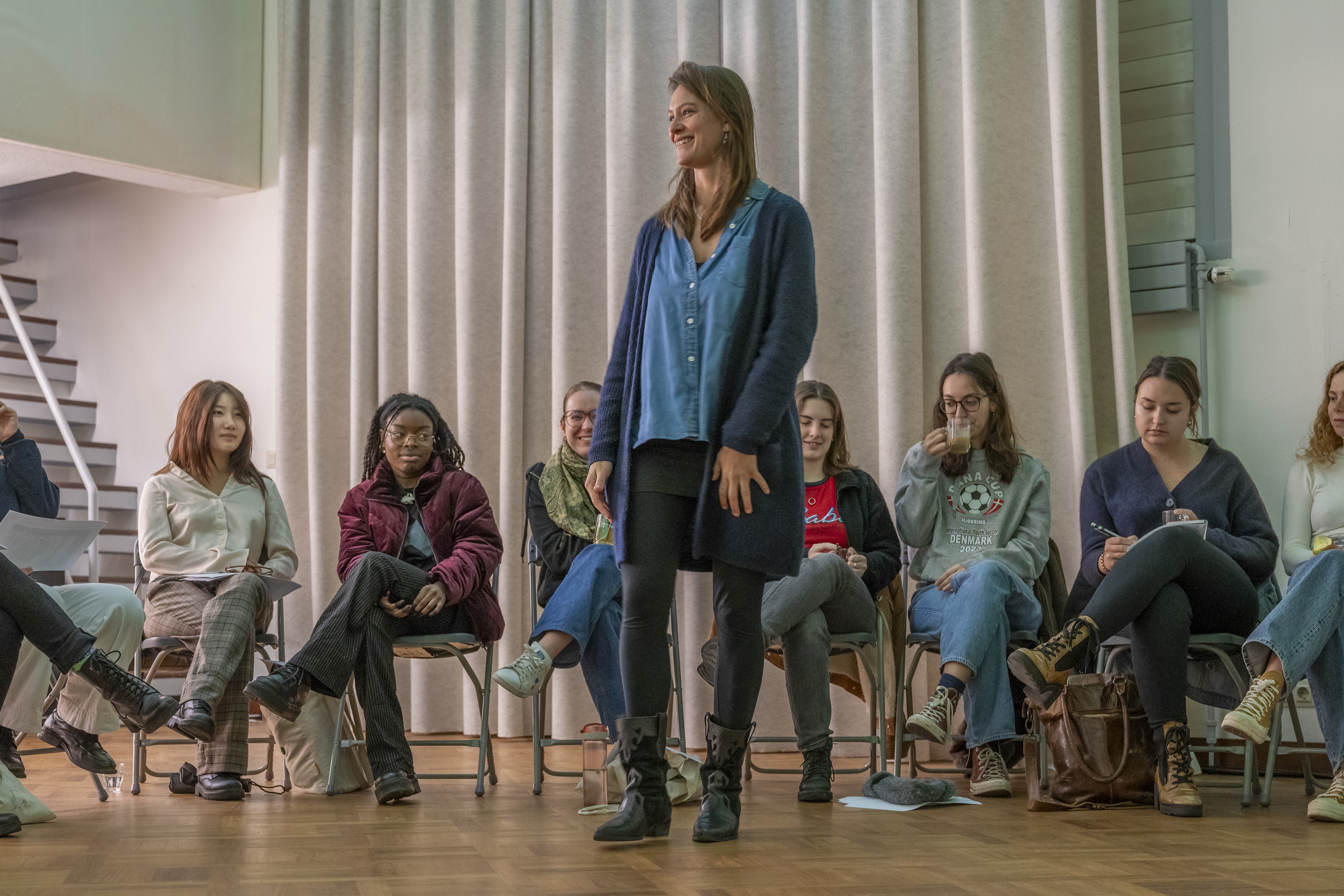
Assistant Professor Elise Seip helps students connect with themselves. -
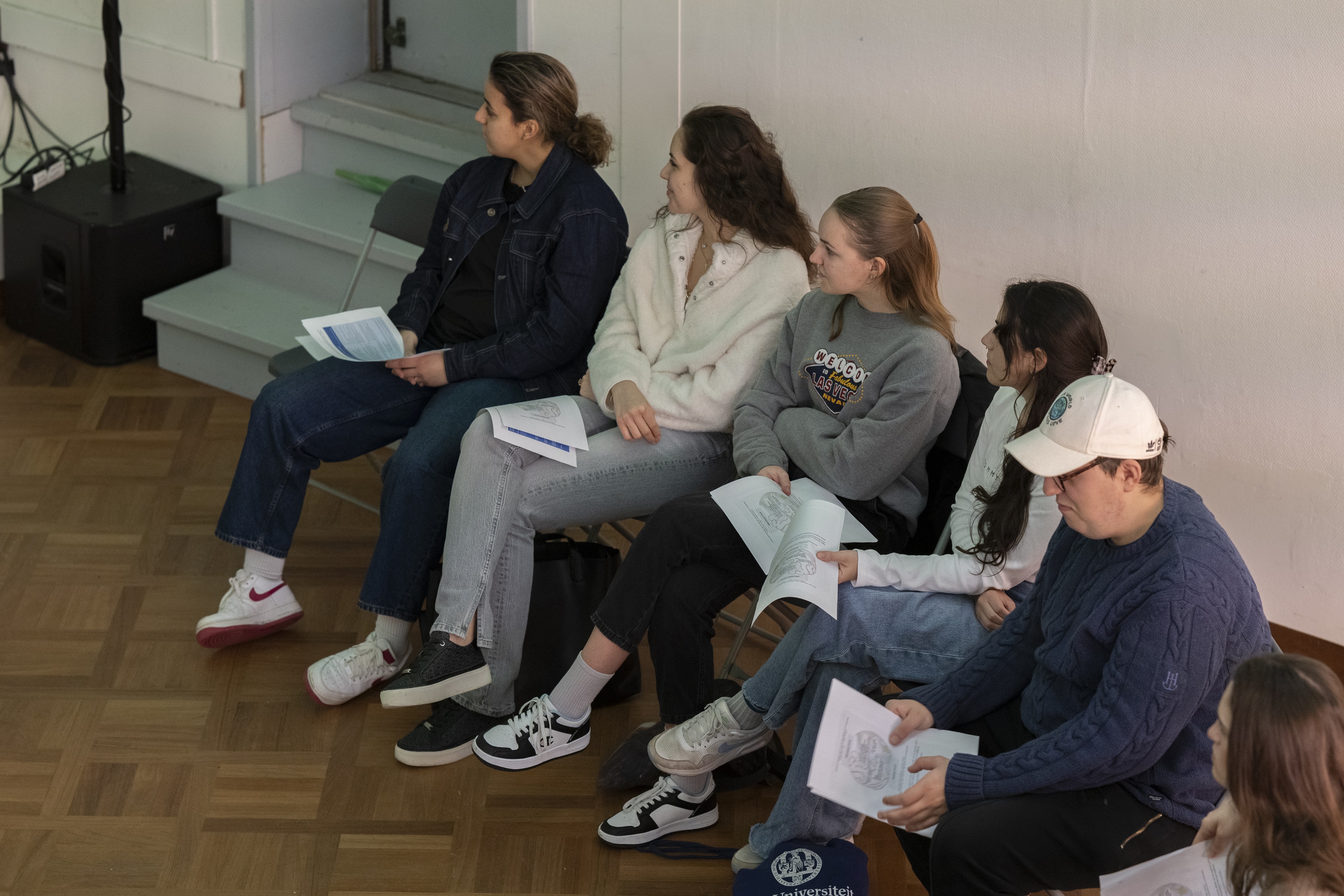
Students on excursion in the former American embassy in The Hague. -
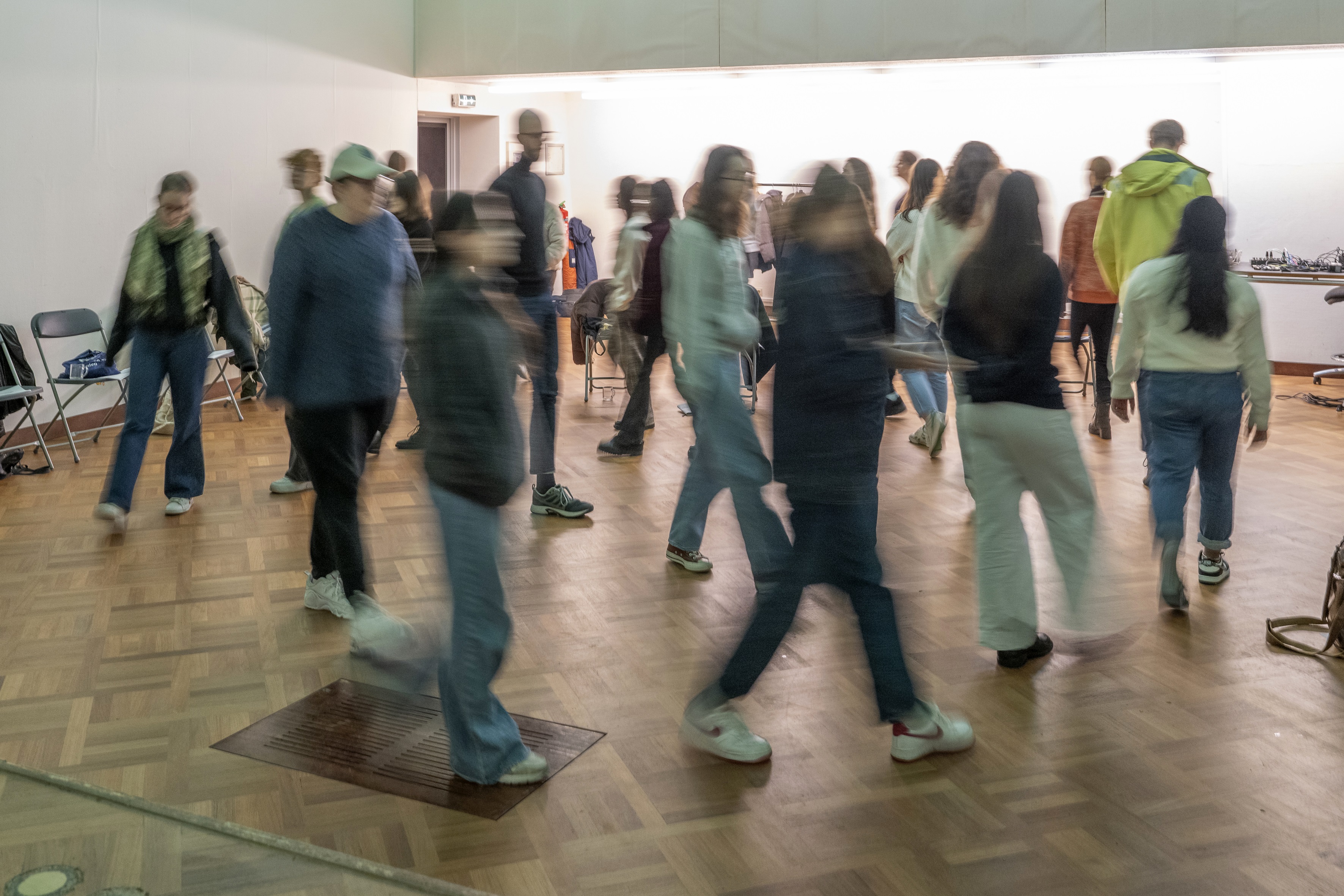
Students on excursion in the former American embassy in The Hague. -
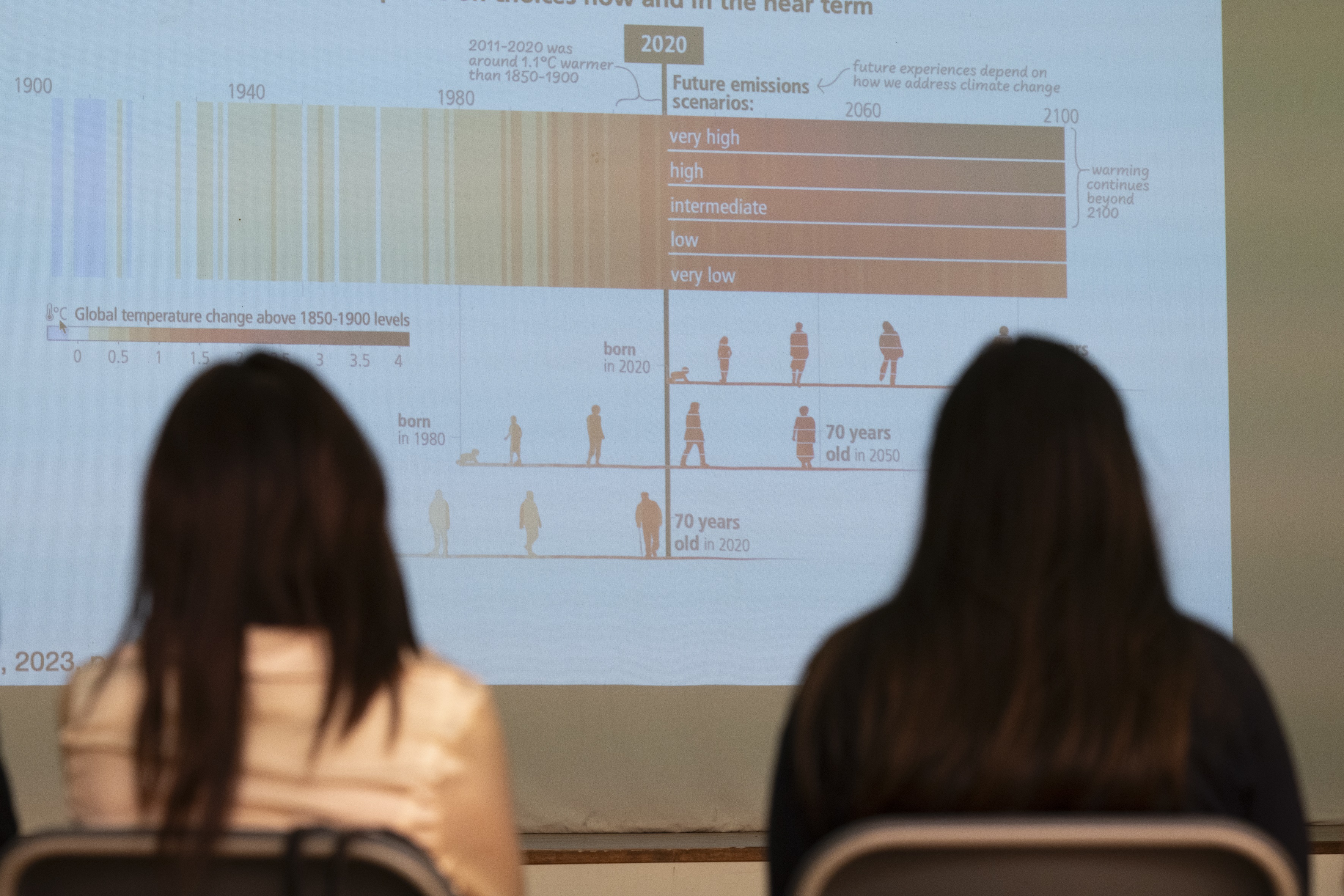
Students on excursion in the former American embassy in The Hague. -
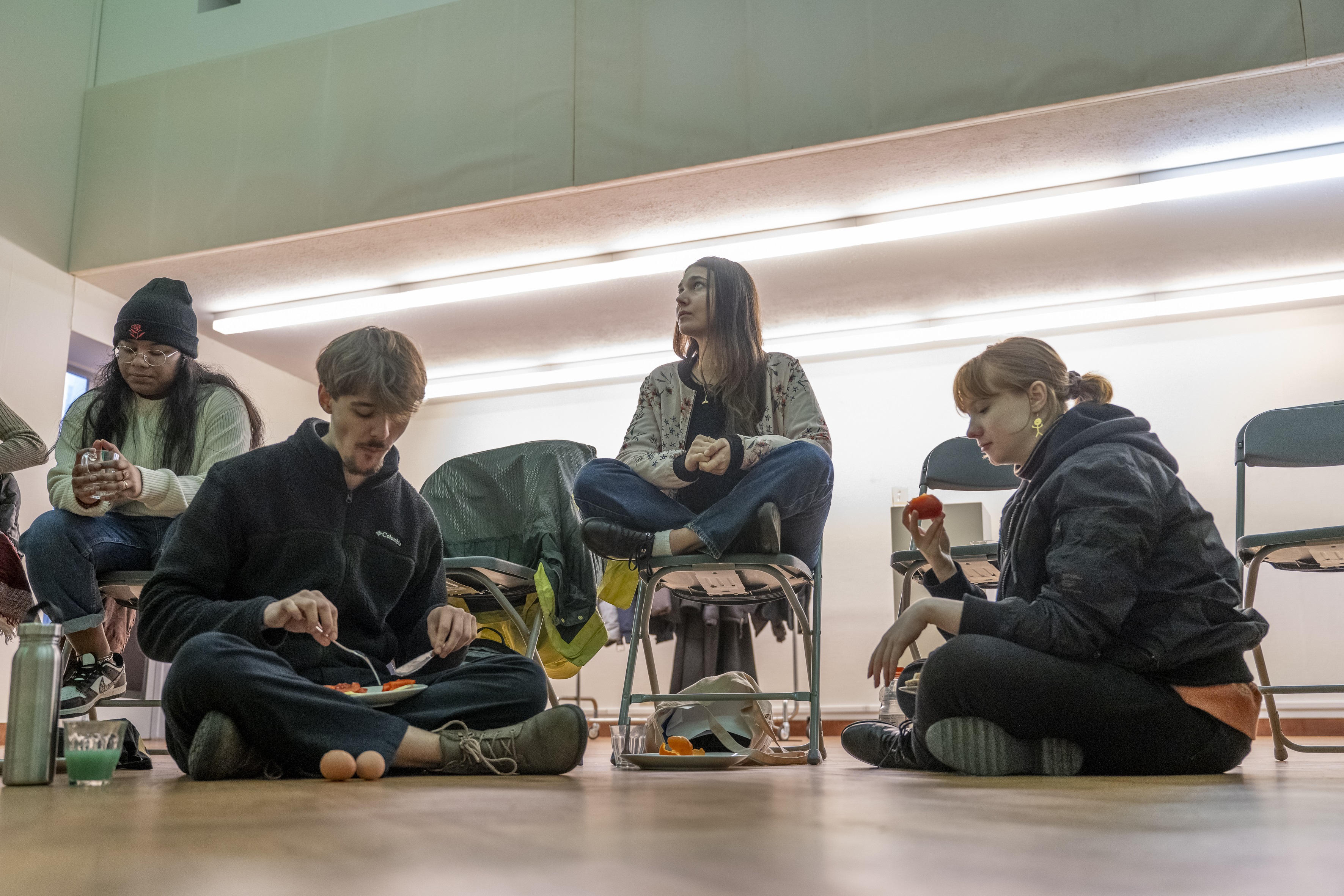
A 'silent lunch'.
Lecturer Jelle Buijs (27) opens the excursion by explaining why this human perspective is so crucial: ‘If we want to bring about transformations towards sustainability, it is vital that we move from our disconnected state to a place where we see ourselves and others as part of the planet we are currently damaging. We can do this by practicing mindfulness and compassion.’ These are precisely the skills that the students are being taught during the excursion.
Conscious time-outs
Following Seip's meditation exercises, designed to heighten students' awareness of their bodies, a silent lunch is scheduled. As the name reveals, the students prepare and eat their lunch in complete silence – no phones or conversations – so they can consciously experience their food – the taste, the smell, the texture.
‘This helps me to not feel guilty whenever I focus on my own well-being’
With the lunch, as well as with the meditation exercises, the students initially feel some discomfort. They move back and forth on their chairs, feeling a bit out of place, or they aren’t sure where to look. But after a while, you can see they become more relaxed and immersed in the exercises.
Student Fenja (26) about Seips lesson: ‘I really liked what she told us how it is important to connect with yourself first and then with other people. To take conscious time-outs and check in with yourself. It helps me to not feel guilty whenever I focus on my own well-being, even when there are big things happening in the world, such as climate change.’
-
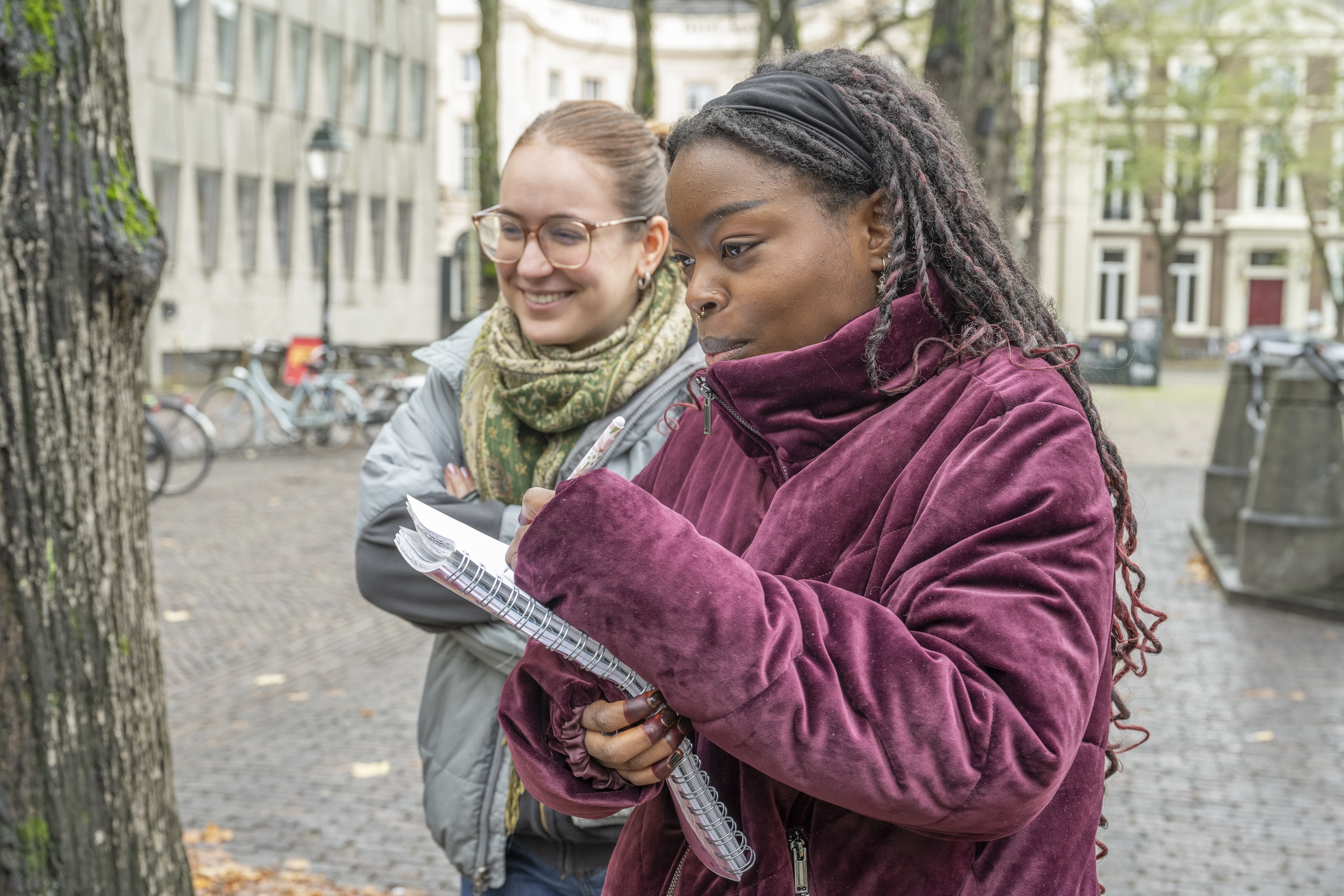
Students out to experience nature through a different lens. -
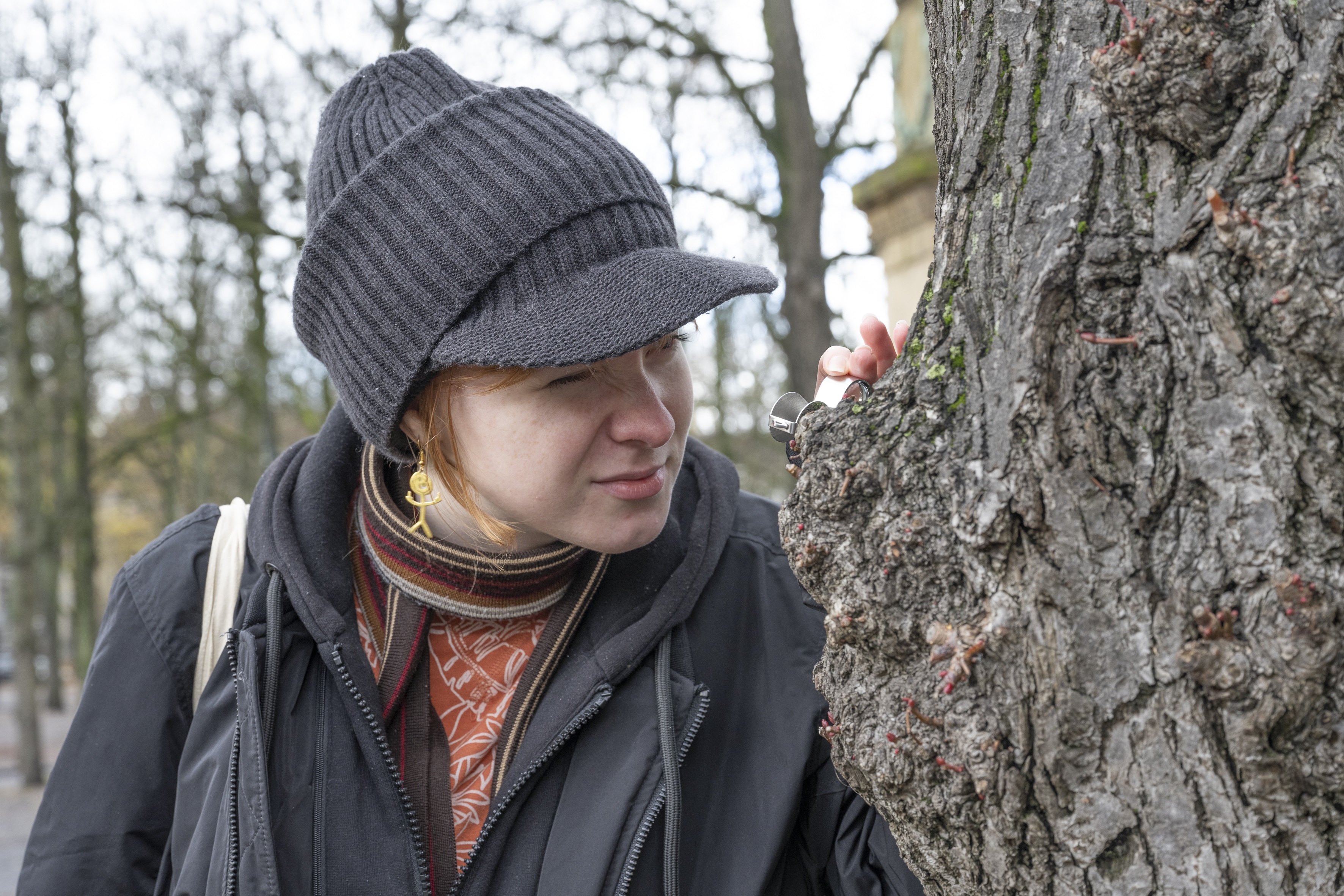
Students out to experience nature through a different lens. -
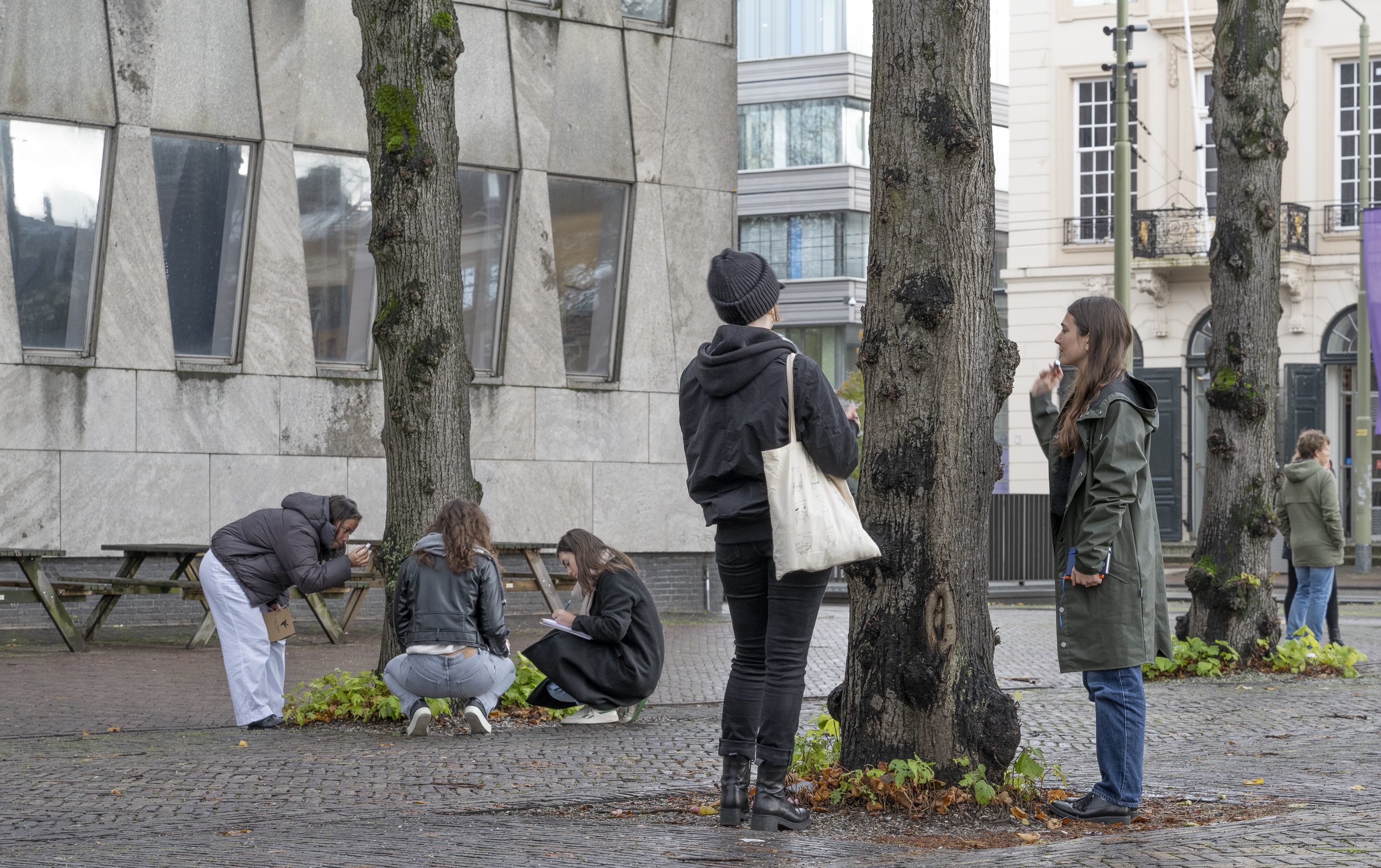
Students out to experience nature through a different lens. -
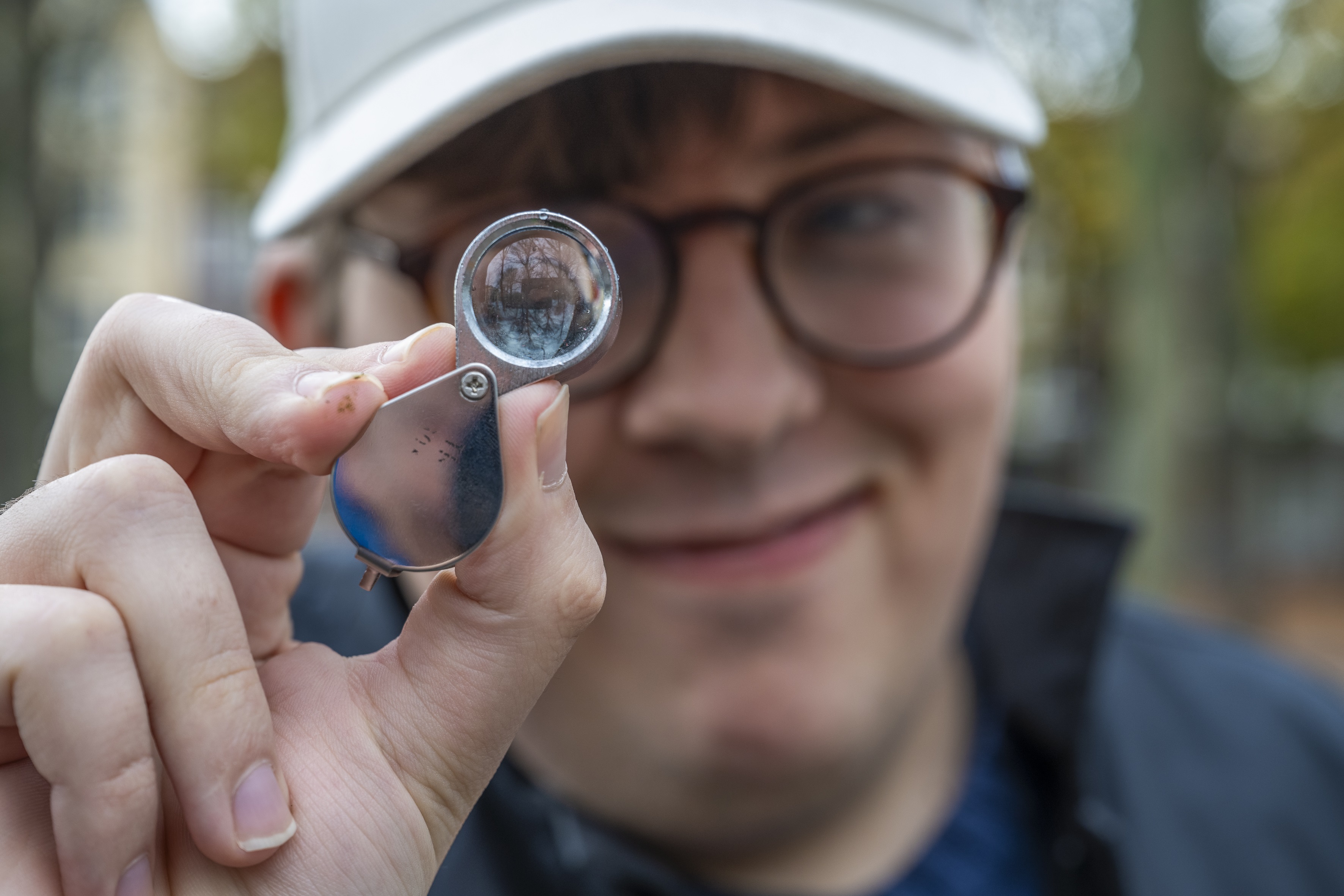
Students out to experience nature through a different lens. -
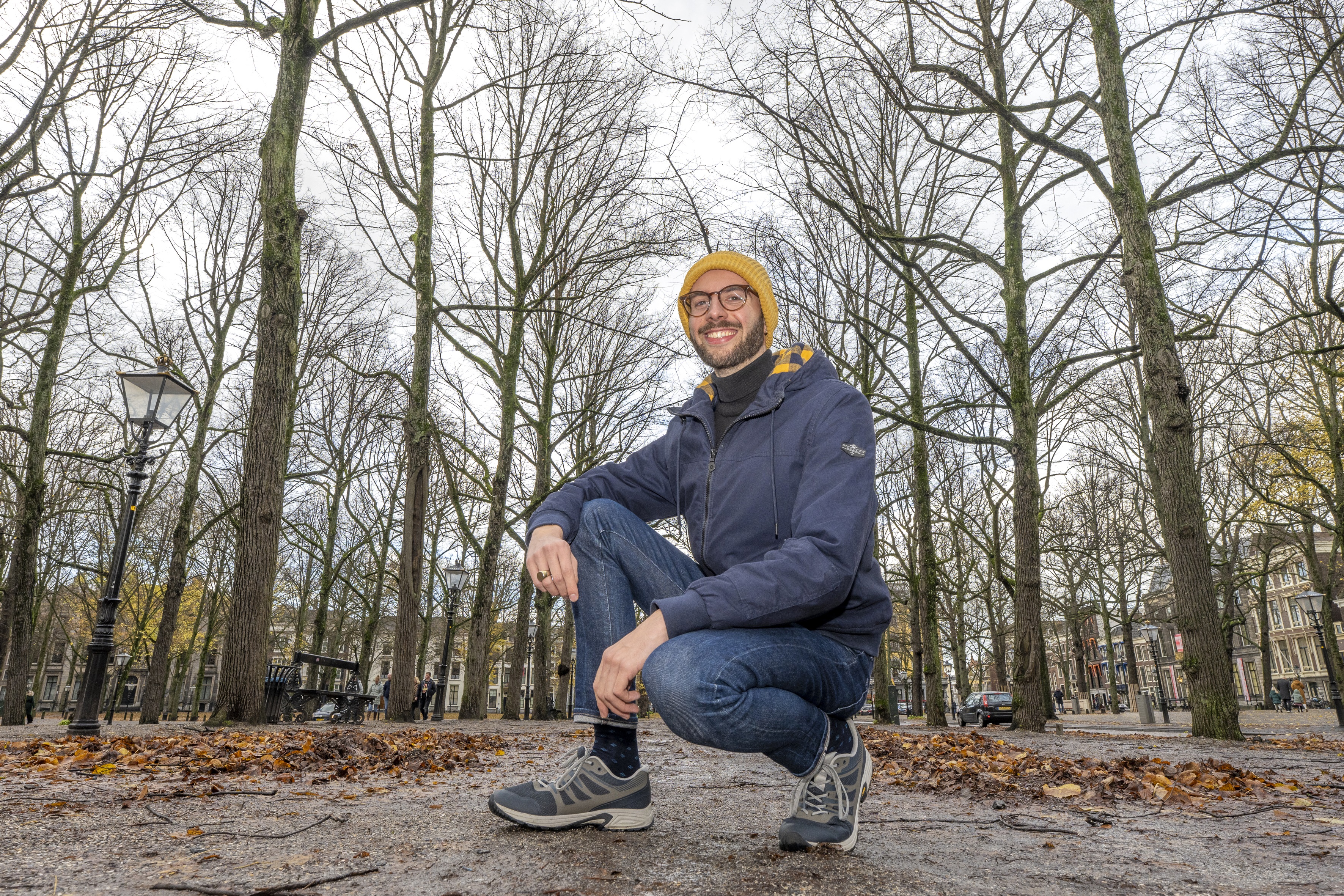
Lecturer Jelle Buijs -
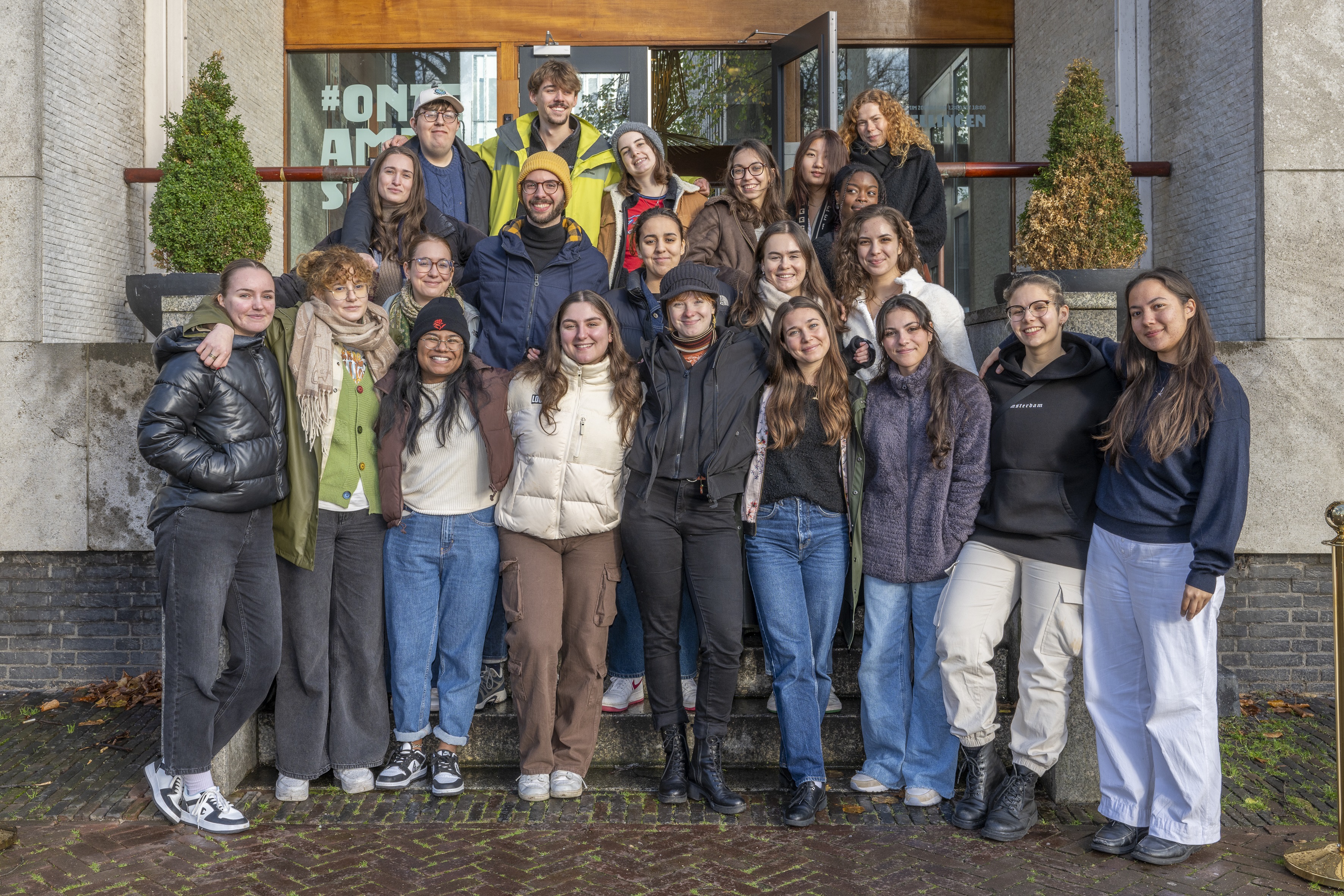
Through the looking glass
As a final exercise the students go outside with a magnifying glass to study nature up close and to draw it, like the trunk of a tree or a ladybug. The goal is to – quite literally – look at the world through a different perspective. ‘We often look at the world from a human-centered perspective, as a consequence we forget that we are part of a much larger ecosystem that we need to connect with’, explains Buijs.
‘It’s fun to let some creativity flow and to see how that can have a positive impact’
It is precisely these kinds of exercises that make ‘Science, Society and Self’ an out-of-the-box track, by challenging students to learn and experience in different ways. Student Elise (23) appreciates this unorthodox approach: ‘I like that this is the flip side to the hard academic aspect of many courses. This course is academic too, but it doesn’t just focus on spouting facts. It’s fun to let some creativity flow and to see how that can have a positive impact on sustainability as well.’
Text: Iris Kole
Photos: Buro JP
